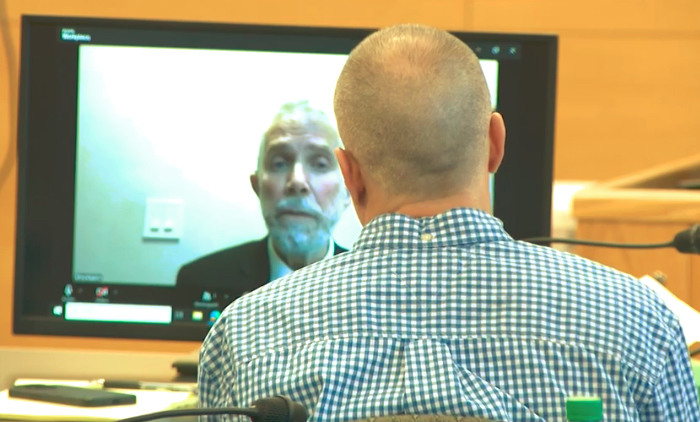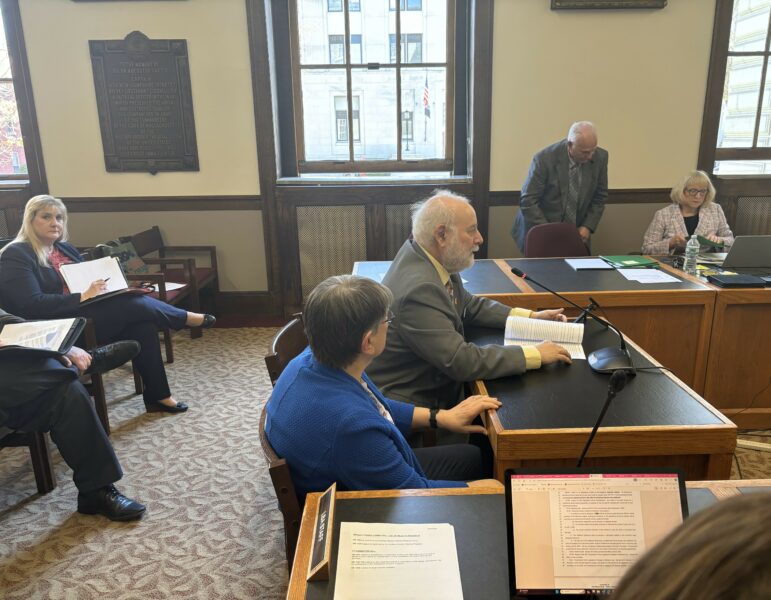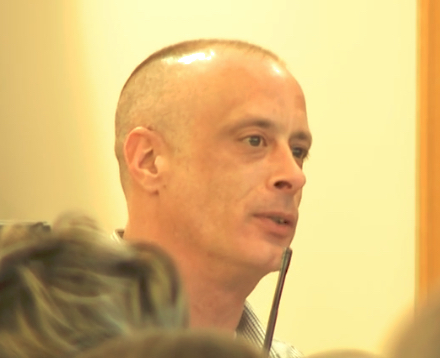
By GARRY RAYNO, InDepthNH.org
Over the past few weeks the number of people with COVID-19 has been steadily increasing.
At the end of last week, the number of daily new infections was approaching 100 a day, and surpassed that at 112 on Saturday, numbers not seen since last May or early June.
With the rising caseloads come increases in hospitalizations and deaths.
The infection rate remains low at about 1 percent, but it too is going up.
State health officials have said for some time they expected to see the cases go up in the fall, and they were right, but the sharp rise over the last week is concerning.
Gov. Chris Sununu last week halted the use of indoor ice hockey arenas and activity which have been super spreaders of the virus, both here and in Vermont and Maine.
When state and education officials were debating how to open schools safely in September, there was substantial pressure to also allow fall sports at a time when colleges and universities were cancelling their fall seasons.
That may have been the better idea given what is happening now.
The governor’s task force on reopening was also told a “pause” would likely be coming in more flexibility for businesses.
Last week was also telling as Health and Human Services released a warning to patrons of Fat Katz Food and Drink in Hudson about potential exposure to the virus and said the Attorney General was investigating the business for violating state food service guidance.
And in Portsmouth five restaurants were closed last week because a server had tested positive for COVID-19 and potentially infected patrons.
The number of complaints filed with the Attorney General’s Office for violating state guidelines against restaurants and bars far outnumber any other segment of the state’s economy.
Restaurants and bars, once a mainstay of the state’s economy, are in a precarious position as fewer people frequent their establishments.
Most have very low margins and need all the patrons they can serve in order to stay open.
But if on the other hand you flout the state guidelines and patrons become infected, no one is going to want to go there.
The key to bringing back customers is to convince them it is safe at a time when the Centers for Disease Control says a majority of people contracting the virus say they recently ate at a restaurant.
If the numbers continue on their upward trend, it is difficult to see how restaurants and bars remain open at 100 percent of capacity or even 50 percent if the caseload goes higher.
The problem for the hospitality industry is there is not likely to be another motherlode of federal help to keep them afloat in the future.
Major changes appear to be ahead for this industry without significant changes in people’s behavior.
Shutting Down
The stay at home orders did work as it slowed the spread of COVID-19 significantly in the spring when it was ravaging the Northeast and the West Coast.
Now the middle of the country, where there has been less attention paid to wearing masks, social distancing and avoiding large gatherings, is overwhelmed and the virus is spreading in all directions.
No one wants to go back to shutting down all but essential businesses, but certainly greater restrictions are likely if the virus continues its upward trend.
Vermont has been more successful at containing the virus than other states. It has greater restrictions and regulations than New Hampshire.
For example at the height of the pandemic in the spring the state not only required out-of-staters to quarantine if they came into the state, state residents who worked in other states even for a day were also required to quarantine.
The state also had a quarantine requirement for people from areas with high infection rates prohibiting them from entering stores, restaurants, gyms, etc.
Six counties in New Hampshire currently fall under the prohibition: Belknap, Grafton, Hillsborough, Merrimack, Rockingham, and Strafford.
The quarantine requirement also applies to Vermonters going to the six counties, which could have a significant impact on businesses in the Upper Valley for example or ski areas later this winter.
Vermont’s GOP governor Phil Scott has also issued a mask mandate for the state.
While Vermont is about half the size of New Hampshire, its infection, hospitalization and death rates are well below New Hampshire’s.
To date, Vermont has less than 2,000 cases of COVID-19 versus New Hampshire’s 10,000. Vermont has 58 deaths compared to New Hampshire’s 465 as of Friday.
Vermont had no one in the hospital for COVID-19 Friday, while New Hampshire had 16.
Sununu has been reluctant to impose the kinds of restrictions Scott has in Vermont.
Nursing Homes
No single segment of the population has been greater impacted by the pandemic than nursing home residents both here and around the country.
Residents of long-term care facilities account for 81.4 percent of the New Hampshire deaths from COVID-19, the highest percentage in the country, although Health and Human Services Commissioner Lori Shibinette notes that does not mean a higher percentage of all nursing home residents died in New Hampshire during the pandemic than any other state.
It is a comparison with community deaths, she notes.
When it became apparent there was a significant problem with asymptomatic staff infecting residents and causing outbreaks, the state began a surveillance testing program in Rockingham and Hillsborough county nursing homes and then expanded it to the rest of the state.
Until the statewide program testing 100 percent of staff every 10 days was in place, there were numerous outbreaks in nursing homes, other long-term care facilities and residential youth programs.
Today there are four outbreaks in nursing homes: Bedford Hills Center, Pine Rock Manor in Warner, St. Teresa Rehabilitation and Nursing Center in Manchester and Warde Health Center Windham.
The only deaths so far from the outbreaks have been at Bedford Hills, where 13 people have died.
The state is changing its surveillance testing program, turning it over to the nursing homes to perform, allowing them to determine when they are done and how frequently.
The state will reimburse the facilities $100 for each test, although some claim that will not cover the total cost.
Shibinette said the state is in a much better position today to handle outbreaks in nursing homes than it was when the pandemic first hit with shortages of testing materials and personal protection equipment. The problem was not confined to New Hampshire.
Today the only PPE difficult to find is large size gloves, but who knows what happens if the virus surges around the country and everyone is scrambling again to purchase enough PPE to protect staff and residents.
Additional Aid
The state received $1.25 billion in federal CARES Act money that has to be spent by Dec. 31. The likelihood of receiving that much money again is not good, and much depends on the new Congress and the president.
The state may be facing more of an economic crisis this winter into next spring than it did this year without the same level of federal aid.
But state revenues are better than anticipated and will not approach the $500 million shortfall many predicted for the two-year biennium.
The shortfall for the last fiscal year will be substantially less than the predicted $200 million.
But there is one thing that could make a bigger difference than the federal money, personal behavior.
If everyone were willing to wear a mask, social distance and avoid large gatherings, that would go a long way to stamping down the upcoming surge.
And the state needs to take a more forceful approach to businesses that flout COVID-19 operating guidelines.
But that may not be enough to bring the numbers down to what Vermont has accomplished next door.
Being as effective as Vermont should be New Hampshire’s long-term goal.
Garry Rayno may be reached at garry.rayno@yahoo.com.
Distant Dome by veteran journalist Garry Rayno explores a broader perspective on the State House and state happenings for InDepthNH.org. Over his three-decade career, Rayno covered the NH State House for the New Hampshire Union Leader and Foster’s Daily Democrat. During his career, his coverage spanned the news spectrum, from local planning, school and select boards, to national issues such as electric industry deregulation and Presidential primaries. Rayno lives with his wife Carolyn in New London.
InDepthNH.org is New Hampshire’s only nonprofit, online news outlet dedicated to reporting ethical, unbiased news and diverse opinions and columns.





